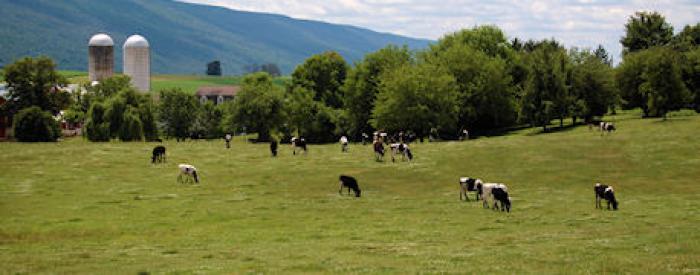1.2.4.1: 1. Pennsylvania Dairy Sector- National to Global Scale - Option 1
- Page ID
- 48051
Overview
Pennsylvania is the fourth largest state in the Nation for milk production, after California, Wisconsin, and New York. Cows produce about 1.3 billion gallons of milk every year in Pennsylvania. Interestingly, 99% of Pennsylvania’s dairy farms are family owned, which is in contrast to states such as California where large industrial dairies dominate production. On most conventional Pennsylvania dairy farms cows are fed forage crops that are grown on farms such as fermented chopped maize plants (silage) and alfalfa. These on-farm forages are mixed with other feed components that are imported to the farm to optimize milk production. There is also an expanding organic dairy sector in Pennsylvania that uses grazing whenever possible to satisfy the U.S. National Organic Program's regulations and organic philosophies of animal management (e.g. Fig. 1.2.8). Pennsylvania’s relatively good soils, temperate climate, and proximity to Eastern U.S. markets have helped to make dairy farms a dominant presence in Pennsylvania agriculture. Farms generally are on flat to hilly topography in what was originally forest, and patches of forest are still very common on steeper terrain throughout Pennsylvania. Manure produced by dairy cows is recycled to the soil to provide crops with nutrients. Farmers have to manage the application of manure and other fertilizers so that nutrients are best used by the crop and do not pollute waterways, which has been a major issue for water quality in the Chesapeake Bay downstream of Pennsylvania farms. Milk produced on these dairy farms is gathered into central processing plants and is then distributed to stores for purchase for consumers, or bought by other dairy industry manufacturers such as yogurt and cheese plants.

Figure 1.2.8.: Cows grazing in a pasture on a Pennsylvania Dairy farm. Credit: Heather Karsten
Be sure to also explore the following website to gain more insight on Pennsylvania’s dairy sector as part of the food system in order to successfully build your concept map and fill in the table items in the assignment:


